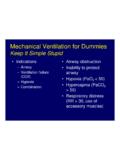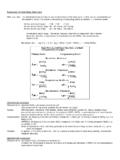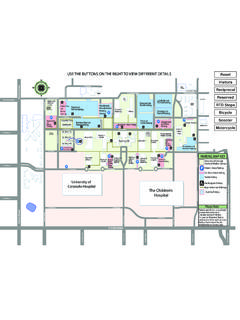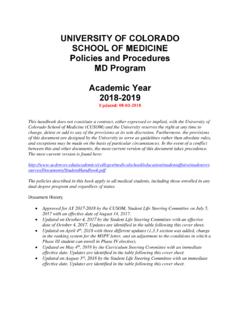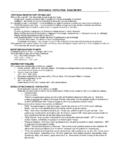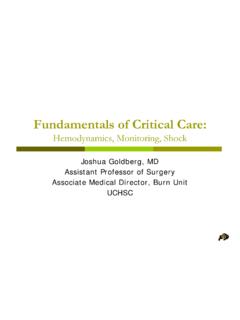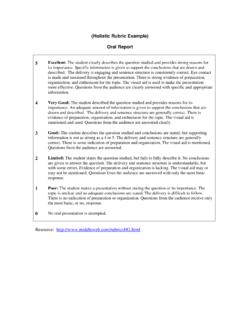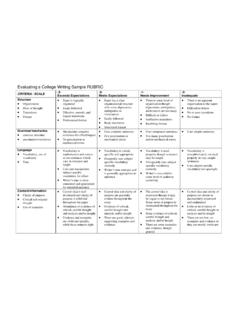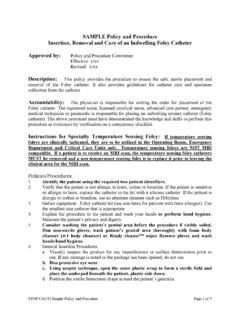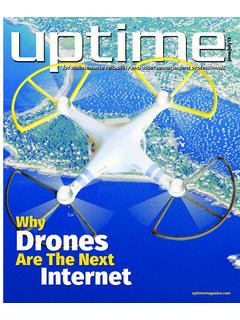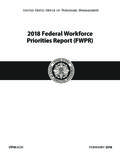Transcription of Data Sharing: Creating Agreements - Denver, …
1 ACKNOWLEDGEMENT The development of these guidelines is a project of the Community Health data and Monitoring Committee, a committee of the Colorado Clinical and Translational Sciences Institute s (CCTSI) Community Engagement Core. We appreciate the review of community and academic partners who have contributed to the presentation and content of these guidelines, and Montelle Tamez for editorial contributions. Funding for this project was provided by the Rocky Mountain Prevention Research Center (Centers for Disease Control and Prevention Cooperative agreement U48 DP001938) and the CCTSI, which is supported in part by Colorado CTSA Grant 5UL1RR025780 from NCRR/NIH.
2 Contents are the authors' sole responsibility and do not represent official CDC or NIH views. data sharing : Creating Agreements In support of community-academic partnerships By Paige Backlund Jarqu n, MPH Colorado Clinical and Translational Sciences Institute & Rocky Mountain Prevention Research Center 1 | P a g e U p d a t e d F e b r u a r y , 2 0 1 2 1 Summary This resource was developed in response to an identified need for more developed guidelines for data sharing in community-academic partnerships. It contains: Best practices on data sharing , data management plans, and data sharing Agreements A step by step process for the creation of a data sharing agreement Recommendations for what to include in a data sharing agreement Information about the creation and support of effective community-academic partnerships including building trust An annotated bibliography of key resources for the support of data sharing in community-academic partnerships And more This resource is intended as a guide to facilitate decision making concerning data sharing Agreements between community and academic partners.
3 It is not meant to be comprehensive, nor directive. Request for Input The content of this document has been culled from literature and resources on the Internet. To anchor this in more than our own real life partnerships, we want you to be a part of this conversation! Please provide us with your feedback so we can improve this document to suit your needs by contacting Paige Backlund Jarqu n at or Julie Marshall at If you want some direction for providing feedback, there is a document feedback form at the end of the document you can use. Thank You! 2 | P a g e U p d a t e d F e b r u a r y , 2 0 1 2 2 data sharing : Creating Agreements Contents Request for Input _____ 1 Background _____ 3 Framework _____ 5 The data Life Cycle _____ 6 data management Plan _____ 7 data sharing agreement _____ 9 Element 1: Strong Partnership with Clear Communication _____ 9 Element 2: Clear Process _____ 10 Example Step-by-Step Process for Creating a data sharing agreement _____ 10 Element 3.
4 Well-Developed Content _____ 11 Annotated Bibliography of Resources _____ 15 agreement Templates _____ 15 data management Plan Resources _____ 16 Partnership Building Resources _____ 17 References _____ 18 Document Feedback Form _____ 20 3 | P a g e U p d a t e d F e b r u a r y , 2 0 1 2 3 data sharing : Creating Agreements Background The past 10 years have seen a strong emergence of community-academic partnerships as an approach to conducting participatory public health research. While this approach brings new opportunities for generating knowledge and exchange, it also raises new social, ethical and administrative challenges, particularly around data use.
5 Addressing and surmounting these challenges is critical for transforming community-academic partnerships into sustained enterprises that address health concerns at the community level. Many funding agencies are attempting to address the challenge of data access, data use and re-use by requiring a thoughtful plan for the data sharing process in research partnerships (Inter-University Consortium for Political and Social Research (ICPSR), 2009). Despite the emphasis on data sharing plans and formal Agreements , funders often leave the mechanism for data sharing unspecified (Piwowar, Becich, Bilofsky & Crowley, 2008).
6 There is little guidance for partners on what to include in data sharing Agreements and how to facilitate the delicate, yet essential, conversations concerning data use and re-use. The complex nature of community-academic research projects can further complicate this process. Partnership dynamics between community partners and academic researchers varies based upon the distribution of power between the organizations, and the interweaving of two different organizational systems (Lindamer et al, 2009). There are three main approaches to power sharing in community-academic research partnerships: community-targeted; community-based; and community-driven.
7 Figure 1 demonstrates the three approaches to power sharing in community-academic research partnerships. 4 | P a g e U p d a t e d F e b r u a r y , 2 0 1 2 4 (Adapted from: Lindemar et al, 2009) Each approach to power sharing specifies clear roles of community partners in the research process. Using community-driven techniques is the most effective at reducing power disparities within community and academic partnerships. Developing a data sharing agreement in collaboration with all partners is one tool that can be used to help increase power sharing among partners.
8 In addition to the navigation of power relations, community-academic partnerships work to combine two very different organizational systems, each with its own goals, values, styles, limitations and pressures (Lindemar et al, 2009). Not only do the types of data differ between partners, but also the needs for re-use, cultivation, analysis and interpretation. This requires shared understanding and open communication, which can be further supported by a well-developed data sharing agreement . data , in all its forms, newly created or re-used, should be maximized for use in order to improve health outcomes.
9 Without a strong partnership with good communication, clear direction for a process, and well-developed content as part of a formal agreement , there are risks to the effective use, re-use and generation of meaningful information that is of value to all partners. Enlists the "voice" of the community to engage participants in studies that the researcher has selected and to aid in the dissemination of the research findings Commiunity-Targeted Research The community has a "vote" in the selection of research topics, but the researcher often determines the study design, method of data collection, and analysis of data Community-Based Research All aspects of the research is shared, giving the community partner equal power.
10 And hence the ability to "veto" Community-Driven Research Figure 1 Three Approaches to Power- sharing 5 | P a g e U p d a t e d F e b r u a r y , 2 0 1 2 5 Framework data sharing is an important piece of an overall data management plan. A data management plan is in turn part of the typical research data life cycle. These are key elements of a wider infrastructure that supports data access, use and sustainability. This guide includes an explanation of the data life cycle, a data management plan, and recommendations for developing a data sharing agreement within community-academic research partnerships.
